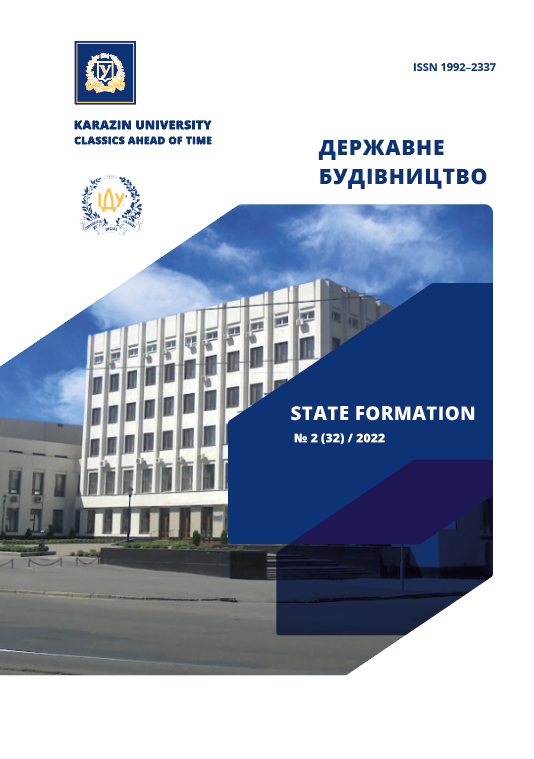Principles of creation of securities and features of state regulation of circulation in developed countries
Abstract
It is noted that two priority directions for the development of the stock market should be determined first when creating a new security. First, it may be the appearance of a new instrument itself, such as the first zero-coupon bond. This is truly a unique type of creativity, which involves the emergence of a qualitatively new technology. Secondly, it can be the design of a tool adapted to solve a specific task by combining already existing technologies. The development of the process of creating securities in different countries is due to the influence of various factors, each of which (or its combination) created the prerequisites for the emergence of new types of securities and new financial schemes. It was determined that in the case of obligations with a fixed rate, the coupon rate of the debt instrument is fixed at the time of issue. The size of the coupon (coupon income) is determined by a number of factors. We call the instrument convertible if it can be exchanged at the discretion of the investor for any other asset of the issuer. As for the corporate issuer, such an asset is usually ordinary shares. The prepayment condition is unattractive to potential investors, so the coupon yield must be raised to sell the instrument. Convertibility, on the other hand, can attract potential investors, and this reduces the coupon size required to sell the instrument. Both recall and convertibility are options. Two main variants of the repayment fund are offered. In the first version of the fund, which is currently the most common, the issuer must periodically buy back a certain part of the volume of the issue in circulation. This redemption can be carried out either in accordance with the terms of early repayment, or by direct access to the open market - depending on the terms of the written issue agreement. In the second option, the issuer makes periodic contributions to a special account controlled by a neutral third party. Income from this account is used to repay the issue when due. Bonds redeemable through such funds are called sinkers in financial jargon. In general, today's settlement funds reduce the level of uncertainty for owners of debt instruments and therefore reduce the required coupon size. However, the degree to which uncertainty is reduced depends largely on the type of settlement fund used.
Downloads
References
Azarenkova, H., Shkodina, I. (2012). Osnovni tendentsii rozvytku fondovoho rynku v postkryzovyi period. Visnyk NBU, no. 2 (192), 3–7 [in Ukrainian].
Baryliuk, I.V., Rubakha, M.V. (2013). Diahnostyka vplyvu faktoriv ekonomichnoho seredovyshcha na formuvannia finansovoho kapitalu kompanii. Finansy Ukrainy, no. 9, 104–117 [in Ukrainian].
Karpinskyi, B.A., Dubyk, V.Ya., Buriak, O.P. (2013). Finansova hlobalizatsiia v konteksti zrushen u natsionalnykh finansovykh systemakh: evoliutsiinyi pidkhid. Naukovyi visnyk NLTU Ukrainy, vyp. 23.10, 150–158 [in Ukrainian].
Kolodziiev, O.M., Zaplatynskyi, M.I., Tarasiuk, D.S. (2011). Osoblyvosti provedennia analizu tsinnykh paperiv v umovakh finansovoi kryzy. Formuvannia rynkovoi ekonomiky v Ukraini, no. 23, ch. 1, 342–349 [in Ukrainian].
Moshenskyi, S.Z. Finansova hlobalizatsiia: zahrozy i perevahy dlia investytsiinoi bezpeky Ukrainy. URL: http://www.mdct.ru/e-journals/PSPE/2007-4/Moshenskiy_407.htm [in Ukrainian].
Pidkhomnyi, O. (2013). Vplyv chynnykiv kultury na ekonomichnu povedinku v umovakh ryzyku. Formuvannia rynkovoi ekonomiky v Ukraini, vyp. 29, ch. 2, 85–89 [in Ukrainian].
AllianzGlobalWealthReport. (2013). URL: https://www.allianz.com/v_1380187782000/ media/economic_research publications/ specials/en/AGWR2013e.pdf
GlobalTop 100 Companies by market capitalisation, PricewaterhouseCoopers LLP. (2014). URL: http://www.pwc.com/gx/en/audit-services/capital-market/publications/asset s/document/pwc- global-top-100-march-update.pdf
Jacobs Bruce I. (2009). Tumbling tower of Babel: subprime securitization and the credit crisis. Financial Analyst Journal, vol. 65, no. 2, 34–46.

